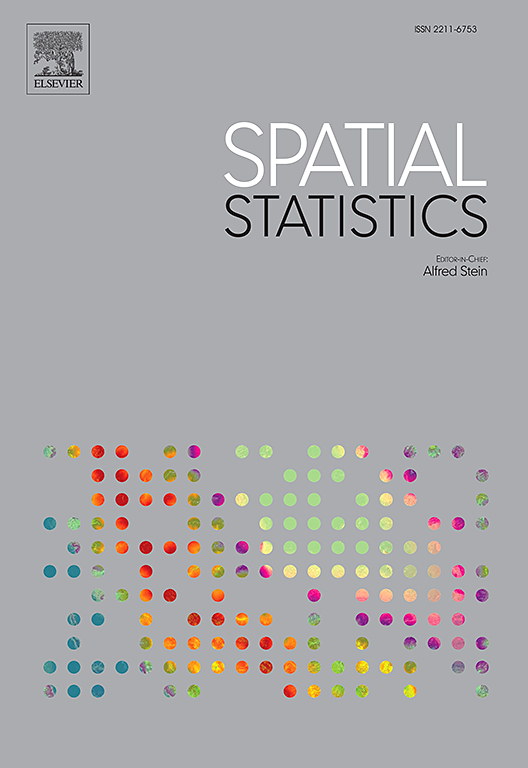Characteristics of some isotropic covariance models with negative values
IF 2.5
2区 数学
Q3 GEOSCIENCES, MULTIDISCIPLINARY
引用次数: 0
Abstract
In the literature, most of the classical covariance models characterised by negative values were derived by utilising the Bessel functions, on the other hand, recently, other classes of models with negative correlation were obtained through the difference between two covariance functions. However, although for the former, the analytic features, such as their absolute minimum values, were completely explored, for the latter these aspects have to be still investigated. In this paper, starting from the admissibility conditions and the general characteristics of three wide families of isotropic covariance models, based on the difference of Gaussian, exponential and rational models, their absolute minimum, as a function of the dimension of the Euclidean space in which they are defined, is provided. Consequently, the minimum values for the most common Euclidean dimensional spaces are given as special cases. These results fill the theoretical gap related to the analysed classes of correlation models with negative values and then can support their use. A simulation study and an application to a real data set are also presented to assess performance in terms of prediction accuracy.
负各向同性协方差模型的特征
在文献中,大多数以负值为特征的经典协方差模型都是利用贝塞尔函数推导出来的,另一方面,近年来,通过两个协方差函数的差来获得其他类型的负相关模型。然而,虽然对于前者,分析特征,如它们的绝对最小值,已经被完全探索,对于后者,这些方面仍然需要研究。本文从三大类各向同性协方差模型的容错条件和一般特征出发,基于高斯模型、指数模型和有理模型的差异,给出了它们的绝对极小值作为它们所定义的欧几里得空间维数的函数。因此,对于最常见的欧几里得维空间的最小值作为特殊情况给出。这些结果填补了与所分析的具有负值的相关模型类别相关的理论空白,从而可以支持它们的使用。通过仿真研究和对真实数据集的应用来评估预测精度方面的性能。
本文章由计算机程序翻译,如有差异,请以英文原文为准。
求助全文
约1分钟内获得全文
求助全文
来源期刊

Spatial Statistics
GEOSCIENCES, MULTIDISCIPLINARY-MATHEMATICS, INTERDISCIPLINARY APPLICATIONS
CiteScore
4.00
自引率
21.70%
发文量
89
审稿时长
55 days
期刊介绍:
Spatial Statistics publishes articles on the theory and application of spatial and spatio-temporal statistics. It favours manuscripts that present theory generated by new applications, or in which new theory is applied to an important practical case. A purely theoretical study will only rarely be accepted. Pure case studies without methodological development are not acceptable for publication.
Spatial statistics concerns the quantitative analysis of spatial and spatio-temporal data, including their statistical dependencies, accuracy and uncertainties. Methodology for spatial statistics is typically found in probability theory, stochastic modelling and mathematical statistics as well as in information science. Spatial statistics is used in mapping, assessing spatial data quality, sampling design optimisation, modelling of dependence structures, and drawing of valid inference from a limited set of spatio-temporal data.
 求助内容:
求助内容: 应助结果提醒方式:
应助结果提醒方式:


